



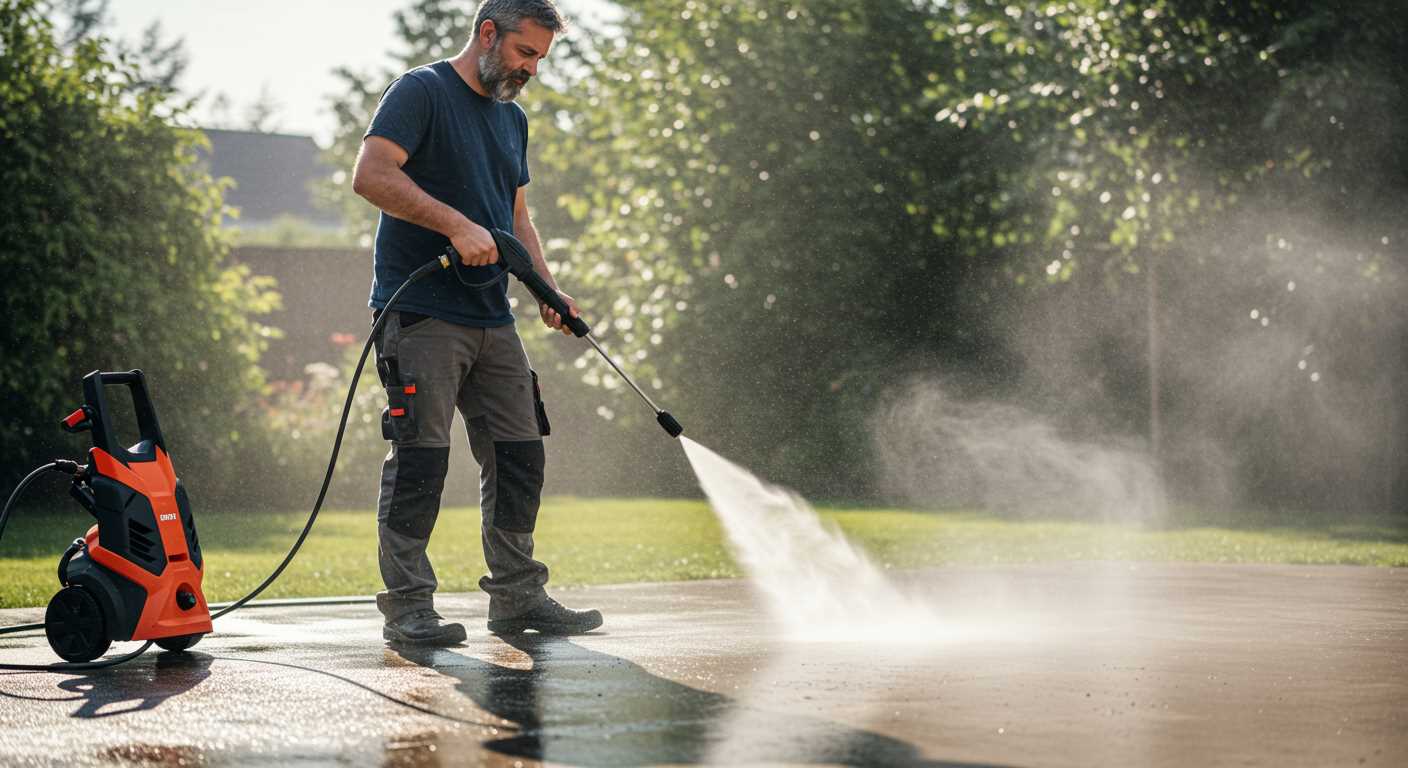
For an immediate enhancement in your cleaning rig’s performance, consider switching to a narrower spray nozzle. This simple change can significantly elevate the water pressure, concentrating the force on stubborn grime. I remember a day spent scrubbing a particularly grimy patio; after swapping the standard nozzle for a 15-degree tip, the difference was astounding. What had previously taken hours was accomplished in minutes.
Another aspect often overlooked is the importance of the water temperature. Using warm water can increase the cleaning efficacy, especially when tackling oil or grease stains. Once, while helping a friend clean his garage, we filled the tank with hot water. The results were impressive, cutting through built-up grime effortlessly. Just ensure that your unit is rated for warm water if you decide to go this route.
Regular maintenance is key to achieving optimal results. I’ve found that cleaning the filter and checking for clogs can make a world of difference. After a few months of use, I noticed a decline in performance due to a dirty filter. A quick clean restored its former glory. Additionally, lubricating moving parts ensures everything operates smoothly, preventing wear and tear.
Lastly, consider the cleaning solutions you employ. Some detergents are specifically formulated to enhance the effectiveness of your setup. In my experience, using a quality soap designed for pressure cleaning not only improves results but also protects surfaces from damage. I once used a generic detergent and was left with streaks and residue; switching to a dedicated product resolved the issue immediately.
Choosing the Right Nozzle for Optimal Pressure
Selecting the correct nozzle is key to enhancing cleaning efficiency with your device. Each nozzle type corresponds to specific tasks, influencing the intensity and dispersion of the water stream. I’ve found that a quick switch can dramatically change results, as I learned during a particularly stubborn grime removal job at a friend’s home.
Types of Nozzles
There are typically four main types of nozzles: zero-degree, 15-degree, 25-degree, and 40-degree. The zero-degree nozzle produces a concentrated stream ideal for tough stains like oil or grease, while the 15-degree variant works wonders on concrete surfaces. The 25-degree nozzle is versatile for general cleaning tasks, and the 40-degree option is perfect for gentle applications, such as washing vehicles or delicate surfaces. Choosing the right one based on the cleaning task can save time and effort.
Adjusting Spray Angle
Adjusting the spray angle is equally important. Wider angles cover more area but with less force, making them suitable for rinsing or applying soap. In contrast, narrower angles focus the stream for intensive cleaning. During a recent project, I switched from a 25-degree to a 15-degree nozzle, and it cut through years of built-up grime on a patio in half the time. Always keep an assortment of nozzles on hand to tailor your approach to different surfaces and stains.
Upgrading Your Pressure Washer Pump
Consider swapping out your existing pump for a higher-performing model. A quality pump significantly influences the effectiveness of your cleaning tasks. When I upgraded the pump on my first unit, I noticed a dramatic increase in cleaning efficiency. It’s one of the best investments I’ve made.
Selecting the Right Pump Type
There are two main pump types: axial and triplex. Axial pumps are generally suited for residential use, while triplex pumps are designed for commercial applications. Triplex models handle higher pressures and are more durable. If you regularly tackle tough jobs, a triplex pump can provide the longevity and performance you need.
Installation Tips
Ensure you follow the manufacturer’s instructions during installation. Here are some steps I recommend:
- Disconnect the power source.
- Remove the old pump by unscrewing the mounting bolts.
- Carefully install the new pump, aligning it with the existing frame.
- Reconnect hoses and fittings securely.
- Test the unit for leaks before full operation.
After upgrading the pump, I noticed a remarkable difference in efficiency. The unit now tackles stubborn grime with ease, cutting down on cleaning time significantly. This upgrade not only enhances performance but also extends the lifespan of your equipment by reducing wear and tear on other components.
Don’t forget to check the specifications of your new pump to ensure compatibility with your existing system. Investing in a high-quality pump can transform your cleaning experience, making it quicker and more effective.
Maintaining Your Pressure Washer for Peak Performance
Regular upkeep is critical for ensuring your cleaning equipment operates at its best. I’ve seen too many people neglect routine tasks, which leads to diminished efficiency and costly repairs. One simple yet effective step is to replace the oil in the pump annually. This keeps the internal components lubricated and functioning smoothly.
Check and Clean Filters
Another important task is inspecting and cleaning the filters. Clogged filters can significantly reduce flow, impacting your machine’s output. I recommend checking them every month during peak usage. If they’re dirty, give them a rinse with water or replace them if they’re worn out. This simple action can restore a surprising amount of performance.
Inspect Hoses and Connections
Don’t overlook the hoses and connections. I’ve encountered issues stemming from cracked or damaged hoses, which can lead to leaks and reduced efficiency. Regularly inspect your hoses for signs of wear and replace them if necessary. Use hose reels to prevent kinks and tangles, ensuring a steady flow of water during use.
Finally, consider investing in complementary equipment that enhances your cleaning experience. For instance, a best air compressor for duct cleaning can significantly aid in maintaining your tools, ensuring they stay in peak condition.
Adjusting the Water Supply for Increased Flow
To enhance the performance of your cleaning unit, ensure a steady and adequate water supply. Start by checking the diameter of the garden hose. A larger diameter allows for increased flow, reducing potential bottlenecks. I recall a time when I upgraded my hose from a standard 1/2 inch to a 3/4 inch; the difference in water flow was remarkable, making my tasks quicker and more efficient.
Optimising Hose Length
A shorter hose length can significantly impact flow rate. Each foot of hose introduces friction loss, which can diminish performance. Whenever possible, minimise the distance between your water source and the unit. On one occasion, I was working on a large property and used a longer hose than necessary; it resulted in lower efficiency. After switching to a shorter hose, I noticed an immediate improvement in water delivery.
Checking Water Source Pressure
Assess the water source pressure before connecting your equipment. If using a municipal supply, make sure the pressure meets the unit’s requirements; typically, a minimum of 20 psi is needed. In some instances, I encountered low water pressure issues at a client’s site. By simply adjusting the valve at the source, we managed to boost the pressure, leading to enhanced cleaning results. Regularly monitoring this aspect ensures optimal performance of your equipment.
Using Hot Water to Enhance Cleaning Power
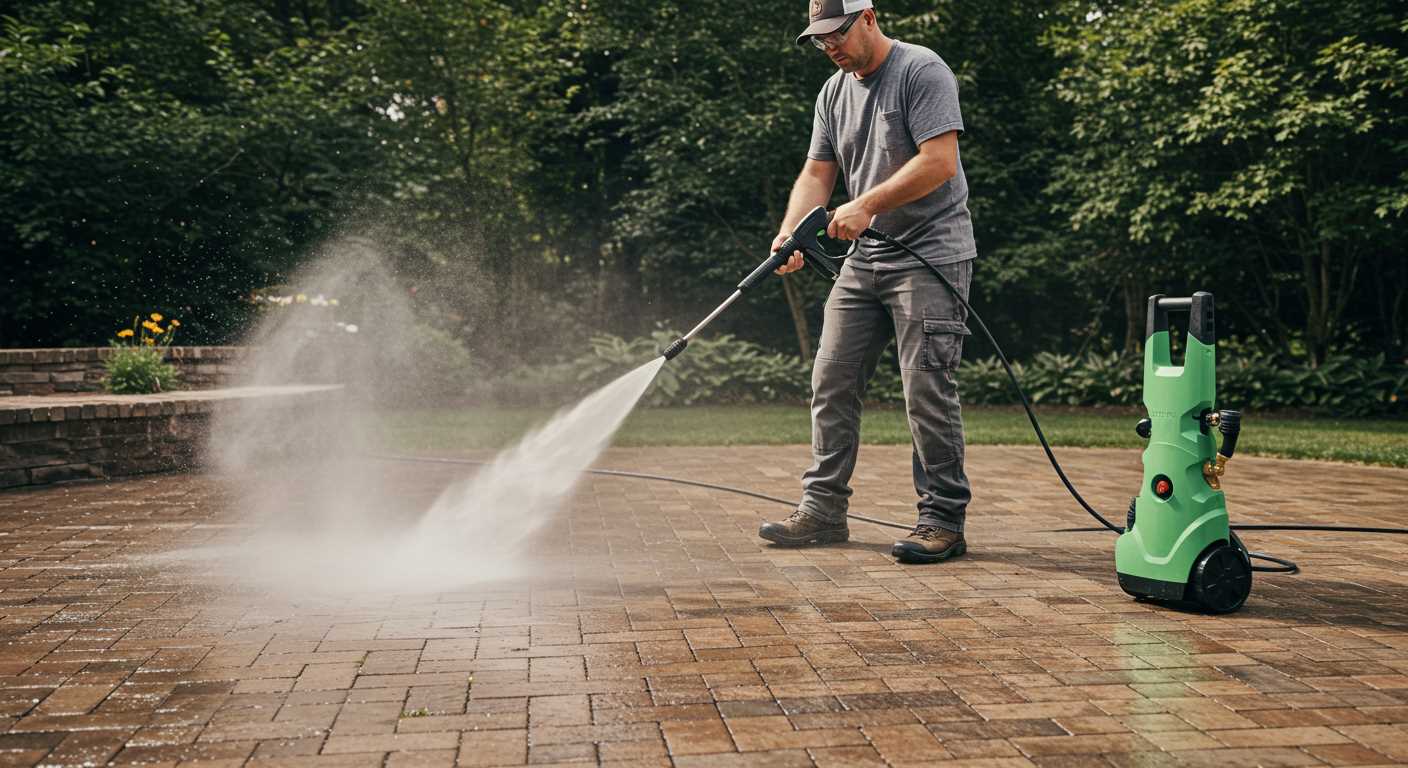
Utilising hot water significantly boosts the cleaning efficiency of a high-pressure device. In my experience, temperatures exceeding 60°C can dissolve grease, grime, and stubborn stains far more effectively than cold water. If your unit allows for hot water operations, it’s definitely worth exploring this feature.
Temperature Recommendations
For optimal results, aim for water temperatures between 70°C and 90°C. At these levels, you’ll notice a remarkable improvement in the removal of tough contaminants, especially on surfaces like concrete, vehicles, and heavy machinery.
Safety and Equipment Considerations
Always check the manufacturer’s specifications before using heated water. Some models may not be designed for high temperatures, leading to potential damage. Additionally, wear protective gear to prevent burns or injuries while working with hot water.
| Surface Type | Recommended Temperature (°C) | Cleaning Agent |
|---|---|---|
| Concrete | 70-90 | Degreaser |
| Vehicles | 60-80 | Car Wash Soap |
| Heavy Machinery | 80-90 | Industrial Cleaner |
I’ve often paired hot water cleaning with specific detergents for even better results. The combination breaks down dirt and oils, making the cleaning process much quicker. Just remember to rinse thoroughly after application to avoid any residue that could attract more dirt.
Adding Detergents for Better Stain Removal
Incorporating the right detergents can significantly enhance cleaning results. Selecting a suitable cleaning agent tailored for your specific task allows for effective removal of stubborn stains and grime.
Choosing the Right Detergent
- Alkaline Detergents: Ideal for grease, oils, and heavy-duty cleaning. These work well on driveways and garage floors.
- Acidic Detergents: Best for mineral deposits, rust, and hard water stains. Great for patios and outdoor furniture.
- Biodegradable Options: Eco-friendly choices are available, ensuring safety for plants and pets while still delivering powerful cleaning.
Application Techniques
- Pre-Mixing: Some detergents require dilution before application. Always follow the manufacturer’s instructions for concentration.
- Using a Soap Injector: Many units are equipped with a soap injector. This device mixes detergent with the water as it is expelled, ensuring an even application.
- Letting It Sit: Allow the detergent to sit for a few minutes before rinsing. This gives it time to break down tough stains.
For specific tasks, such as cleaning gutters, consider using a gutter cleaning attachment for pressure washer. This can improve the effectiveness of your cleaning solution, especially when tackling accumulated debris.
Always test a small area first to ensure compatibility with surfaces. This approach prevents damage and guarantees optimal results in your cleaning endeavors.
Implementing Proper Technique for Maximum Impact
Positioning the nozzle at the correct angle can significantly enhance cleaning efficiency. For stubborn stains, aim the spray at a 45-degree angle to the surface. This approach allows the water jet to penetrate the grime while preventing damage to the underlying material. Move in a sweeping motion, overlapping each pass slightly to ensure complete coverage.
Distance Matters
Maintaining the appropriate distance from the surface is crucial. Too close, and the force can cause etching; too far, and the effectiveness diminishes. A distance of 12 to 18 inches typically strikes the right balance. Adjust as needed based on the surface texture and type of dirt you’re tackling. For instance, when cleaning concrete, you can get closer, while delicate surfaces like wood require more distance.
Technique Variations for Different Surfaces
Adopting varied techniques based on the cleaning surface can yield remarkable results. For vertical surfaces, such as walls, start from the top and work your way down. This prevents streaks and ensures that dirt flows downwards, not upwards. For horizontal surfaces like driveways, begin at one end and move in a straight line to the other. This method avoids re-soiling already cleaned areas.
Lastly, incorporating a consistent rhythm while applying pressure can enhance the overall impact. A steady hand with a rhythmic movement can help dislodge dirt more effectively. Remember, patience and precision often lead to the best outcomes in your cleaning efforts.
FAQ:
What are some tips to increase the pressure of my washer?
To boost the pressure of your washer, first, check the nozzle type and size. A smaller nozzle will increase pressure but reduce flow, which may be suitable for tough cleaning jobs. Also, ensure that the water supply is strong and free of blockages. Cleaning or replacing the filter can improve performance. Regular maintenance, such as checking for leaks in hoses and connections, is also important. Lastly, consider using a detergent that is compatible with your washer to enhance cleaning power.
Can using hot water enhance the pressure washer’s performance?
Using hot water can significantly enhance the cleaning power of your pressure washer. Hot water helps to break down grease and grime more effectively than cold water. If your pressure washer is designed for it, using hot water can increase the overall cleaning efficiency. However, ensure that your machine is rated for hot water use to prevent any damage to the components.
How do I choose the right detergent for my pressure washer?
Selecting the right detergent is vital for optimal performance. Look for detergents specifically formulated for pressure washers, as they are designed to work with the water pressure and temperature settings of your machine. Consider the type of surface you are cleaning—some detergents are better suited for concrete, while others work well on vehicles or wood. Always follow the manufacturer’s instructions regarding dilution rates to avoid damaging your washer or the surfaces you are cleaning.
Is it possible to modify my pressure washer to increase its power?
Modifying a pressure washer to increase its power is not generally recommended, as it can void warranties and potentially damage the machine. However, some users may consider upgrading the pump or motor, but this should only be done with thorough research and understanding of the machine’s specifications. Always consult the manufacturer or a professional before attempting any modifications to ensure safety and performance integrity.
What maintenance should I perform to keep my pressure washer at peak performance?
Regular maintenance is key to keeping your pressure washer performing well. Start by checking and cleaning the filter and nozzle to prevent clogs. Inspect the hoses for any signs of wear or leaks and replace them if necessary. After each use, run clean water through the system to flush out any detergent residue. Additionally, store your washer in a dry place and protect it from freezing temperatures to prolong its lifespan. Schedule a professional inspection annually to keep everything in top condition.
What are some tips to increase the cleaning power of my pressure washer?
To enhance the cleaning power of your pressure washer, consider a few practical adjustments. First, ensure you’re using the right nozzle for the task; a narrow spray pattern typically delivers more pressure, which can be more effective for tough stains. Secondly, check the pressure washer’s detergent settings. Using a suitable cleaning solution can help break down grime more efficiently. Additionally, inspect the water supply; ensure that the hose is free of kinks and that your water source provides adequate flow. Lastly, maintaining your machine with regular servicing, such as cleaning the filter and pump, can help it perform at its best.
How can I improve the efficiency of my pressure washer while using it?
Improving the efficiency of your pressure washer during use involves several practical strategies. Begin by adjusting the distance between the nozzle and the surface being cleaned; getting too close can cause damage, while being too far can reduce cleaning effectiveness. It’s also beneficial to work in sections, applying detergent first and allowing it to sit for a few minutes before rinsing. This dwell time allows the cleaning solution to penetrate and break down dirt. Additionally, ensure that you’re using the right pressure setting for the surface—lower pressures for softer materials and higher ones for tougher surfaces. Regularly rotating the nozzle can also help cover areas more evenly and efficiently.

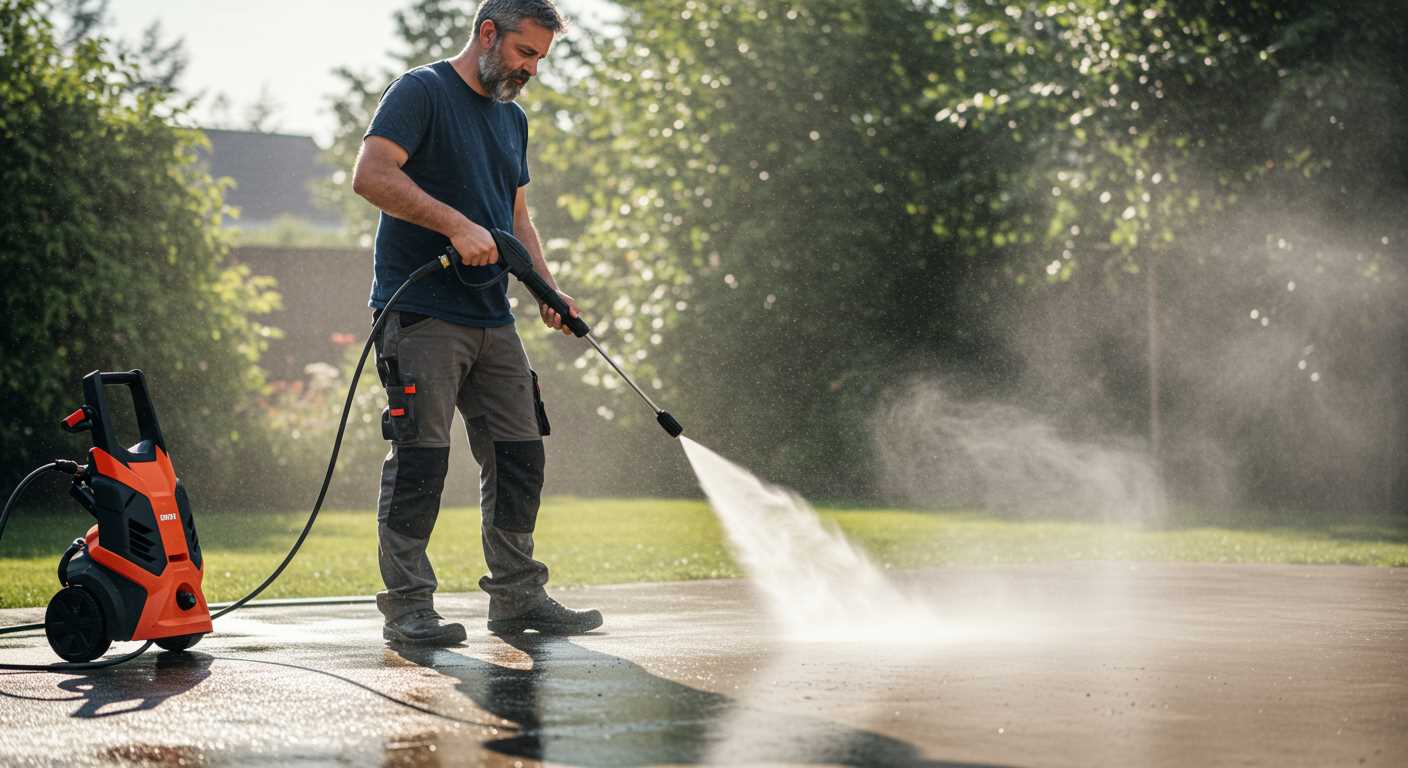


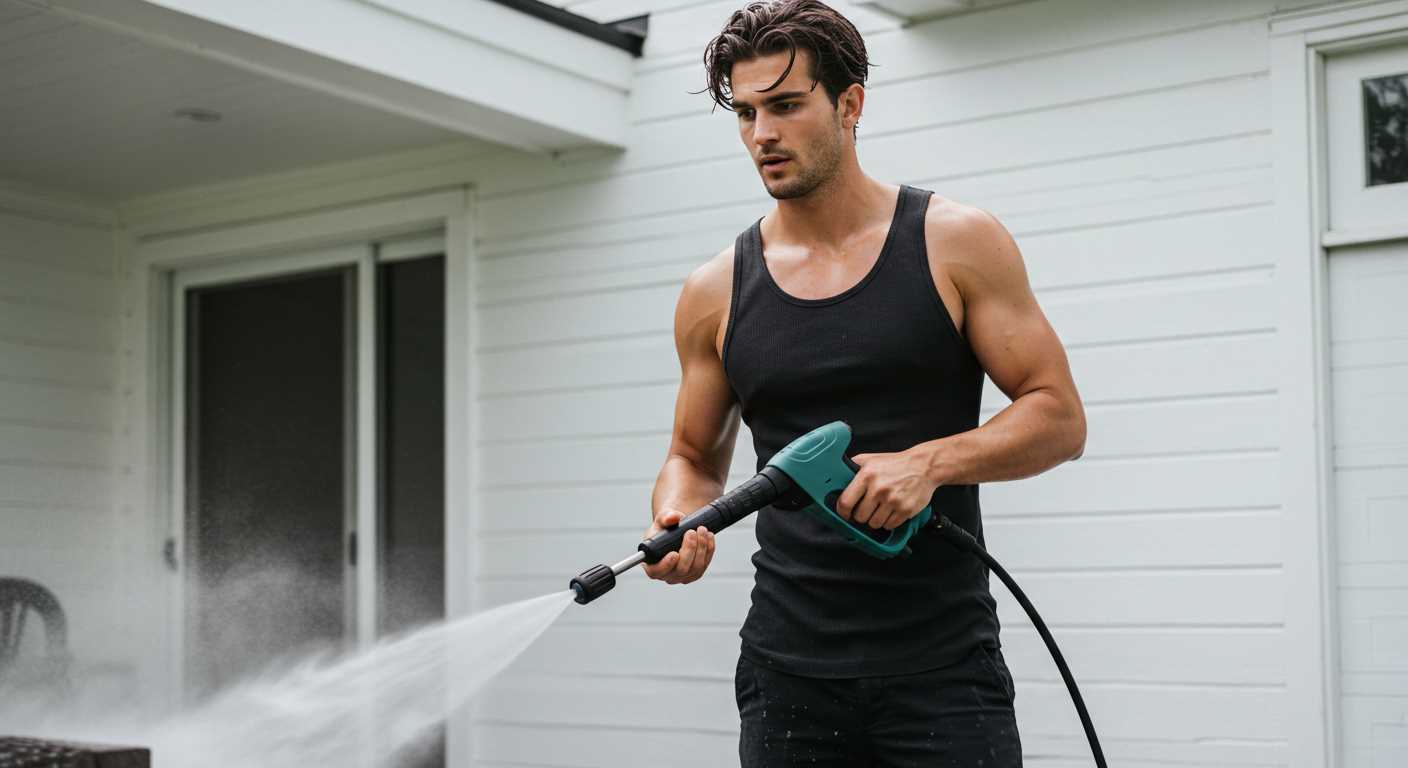
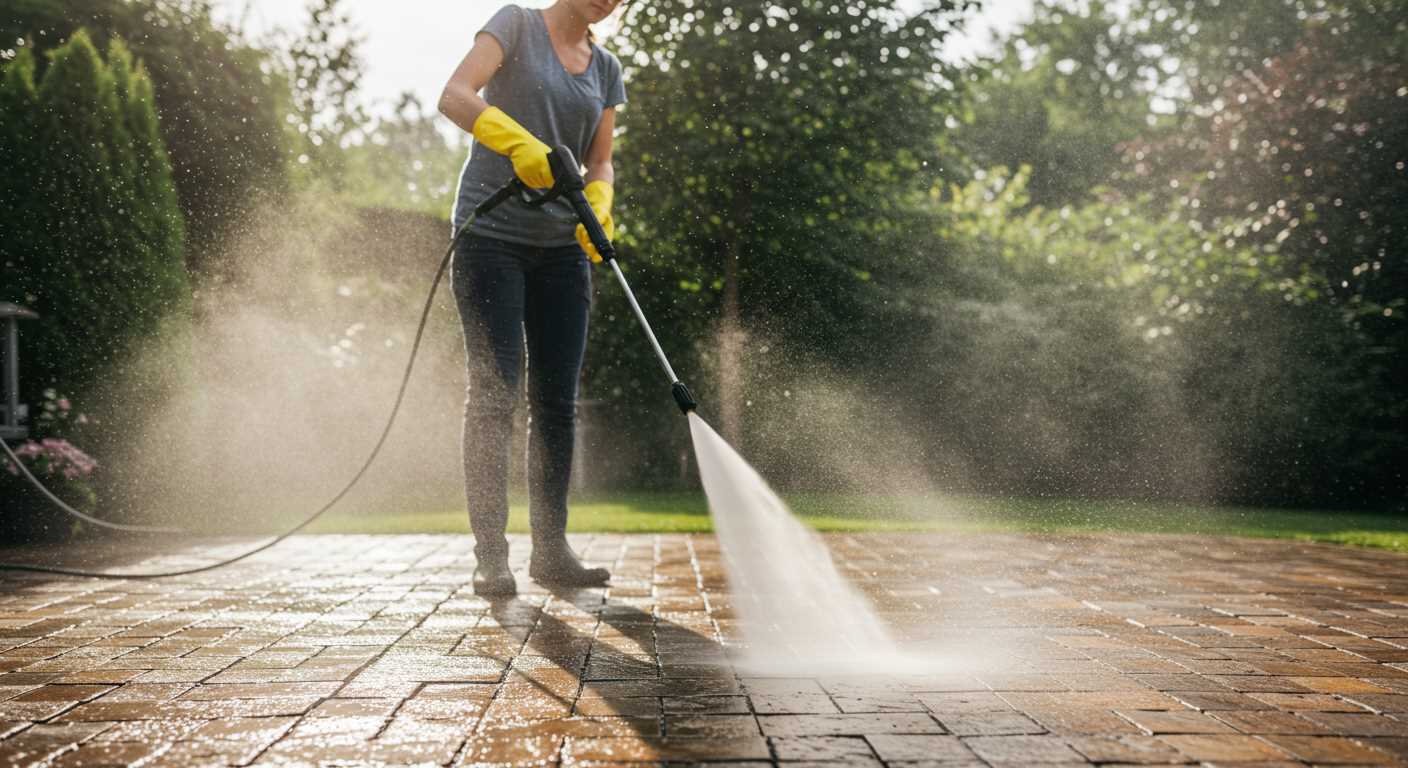
.jpg)


